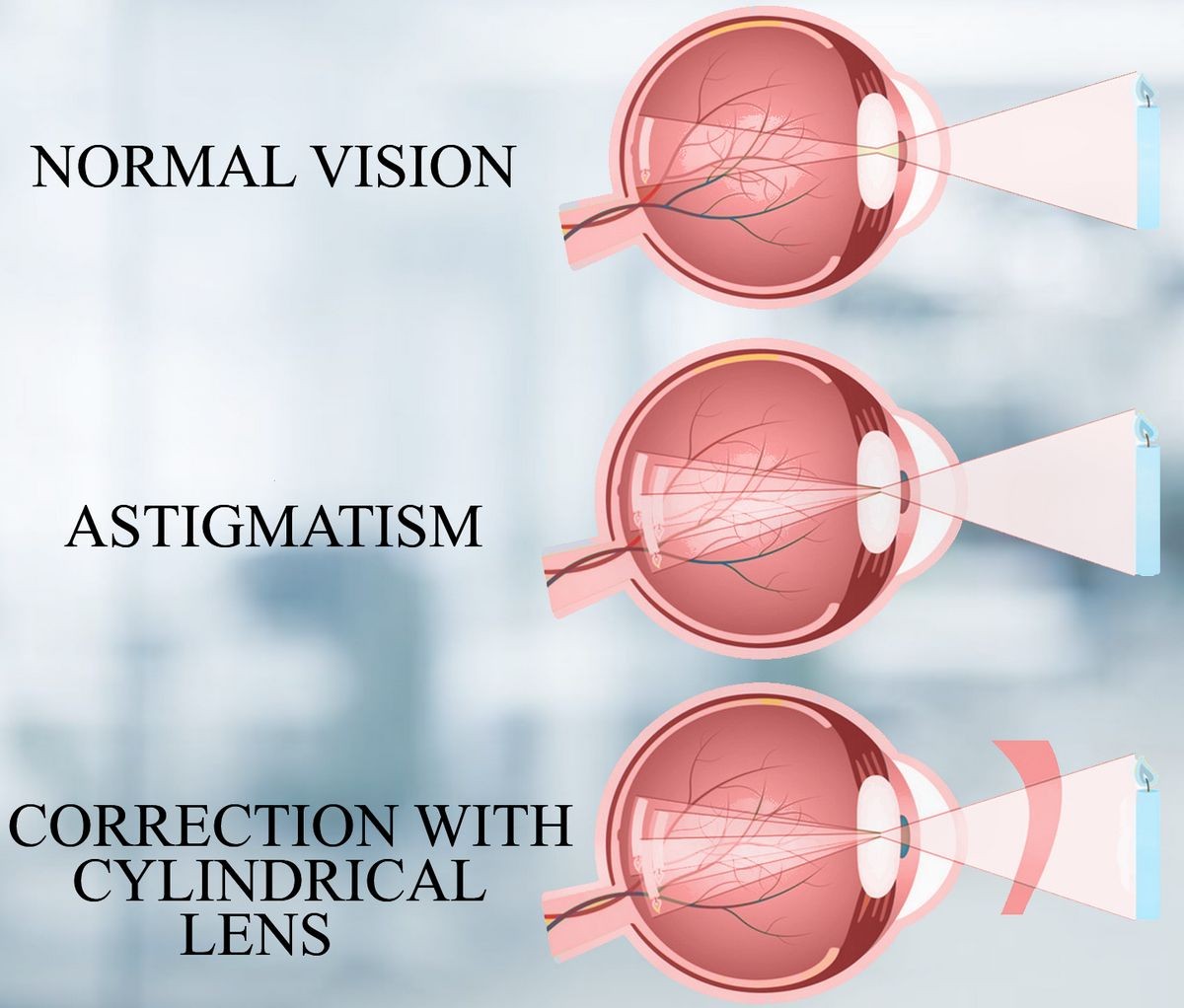
Contents
- 1 Astigmatism
- 1.0.1 What are the different types of astigmatism?
- 1.0.2 What is the main cause of astigmatism?
- 1.0.3 What are the risk factors for astigmatism?
- 1.0.4 What are the symptoms of astigmatism?
- 1.0.5 How is astigmatism diagnosed?
- 1.0.6 What is the best way to correct astigmatism?
- 1.0.7 What is the outlook for astigmatism?
- 1.0.8 What are the complications of surgery for astigmatism?
- 1.0.9 Can astigmatism be prevented?
Astigmatism
Astigmatism is a problem of how the eye focuses light caused by a defect in the lens, resulting in distorted images.
The word astigmatism comes from the Greek "a" meaning "without" and "stigma" meaning "spot."
To see clearly, the eye must focus light into a single plane at the surface of the retina. In astigmatism, a point of light is focused at two different planes, causing blurred vision.
An eye without astigmatism has a spherical cornea, shaped like a ping-pong ball, with all curves the same.
An eye with astigmatism has a toric cornea, shaped more like the bottom of a spoon, with two different surface curves located 90 degrees apart.
What are the different types of astigmatism?
Astigmatism can be classified based on the source, regularity/irregularity, or direction.
The most common type is corneal astigmatism, which has regular curves located 90 degrees apart.
Regular astigmatism can be corrected with lenses or surgery, while irregular astigmatism cannot be corrected with glasses or soft contact lenses.
Historically, astigmatism was classified as "with the rule" or "against the rule," depending on the orientation of the steepest part of the cornea.
What is the main cause of astigmatism?
Astigmatism is mainly caused by an anatomical imperfection in the shape of the cornea, where the front curvature is toric instead of spherical.
A small amount of astigmatism is considered normal and is common from birth or during childhood and young adulthood. It may increase in amount during the growing years.
Astigmatism can be hereditary and is often associated with myopia or hyperopia.
Other causes of astigmatism include corneal scars, ocular surgery, and certain eye diseases.
What are the risk factors for astigmatism?
Individuals with a family history of high degrees of astigmatism or keratoconus are at risk.
Additionally, people who use power tools without safety glasses are at risk for acquired astigmatism.
What are the symptoms of astigmatism?
Astigmatism causes blurred vision and difficulty seeing fine details at any distance.
Small amounts of astigmatism may not be noticed. Untreated astigmatism can lead to vision problems.
An ophthalmologist can diagnose astigmatism through refraction or measuring the curvature of the cornea.
IMAGES
How is astigmatism diagnosed?
A complete eye examination can easily diagnose astigmatism, including refraction, slit lamp examination, and corneal measurements.
What is the best way to correct astigmatism?
Astigmatism can be corrected with corrective lenses or refractive surgery.
Corrective lenses
Wearing eyeglasses or contact lenses can counteract the uneven curvatures of the cornea or lens.
Refractive surgery
Refractive surgery, such as LASIK, LASEK, PRK, Epi-LASIK, or SMILE, can permanently improve vision and eliminate the need for glasses or contact lenses.
What is the outlook for astigmatism?
About 30% of people have astigmatism, which usually stabilizes after the age of 25. Astigmatism in childhood or young adulthood does not indicate future eye disease.
Progressive astigmatism can occur due to corneal trauma, repeated infections, or degenerative diseases.
What are the complications of surgery for astigmatism?
Surgeries for astigmatism are relatively safe but may have complications such as under or overcorrection, halos or starbursts around lights, dry eyes, infection, scarring, or vision loss.
Can astigmatism be prevented?
Common types of astigmatism cannot be prevented, but maintaining overall eye health through a healthy diet, reducing screen time, and protecting the eyes can help. Eye safety precautions can reduce astigmatism caused by corneal trauma.
Read, S. A., et al. "A review of astigmatism and its possible genesis." Clinical and Experimental Optometry 90.1: 5-19.


